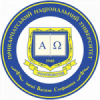The Impact of the Surface Morphology on Energy Characteristics of Nanoporous Carbon Material
DOI:
https://doi.org/10.15330/jpnu.1.1.17-25Keywords:
activated carbon material, double electric layer, electrolyte, specific capacity, internal resistance, electrochemical capacitorAbstract
The impact of nanoporous carbon material (PCM) morphology on its electrochemical behavior in aqueous electrolyte has been studied. The optimum concentration of aqueous lithium sulfate which provides the maximum specific energy characteristics of capacitor-type systems C/Li2SO4/C is determined. Capacitive parameters of electrochemical capacitors (EC) in aqueous solutions of lithium, sodium and potassium sulfate which have different molar ratio have been studied by comparative analysis. Cyclic voltammograms at different scan rates show that the PCM capacitive behavior in three electrolytes increases in the following order Li2SO4<Na2SO4<K2SO4. This improvement could be a result of increasing the movement speed of hydrated ions in the volume of electrolyte and in the internal pores of PCM in the order Li+<Na+<K+. The obtained results give valuable information for the study of new hybrid supercapacitors.






